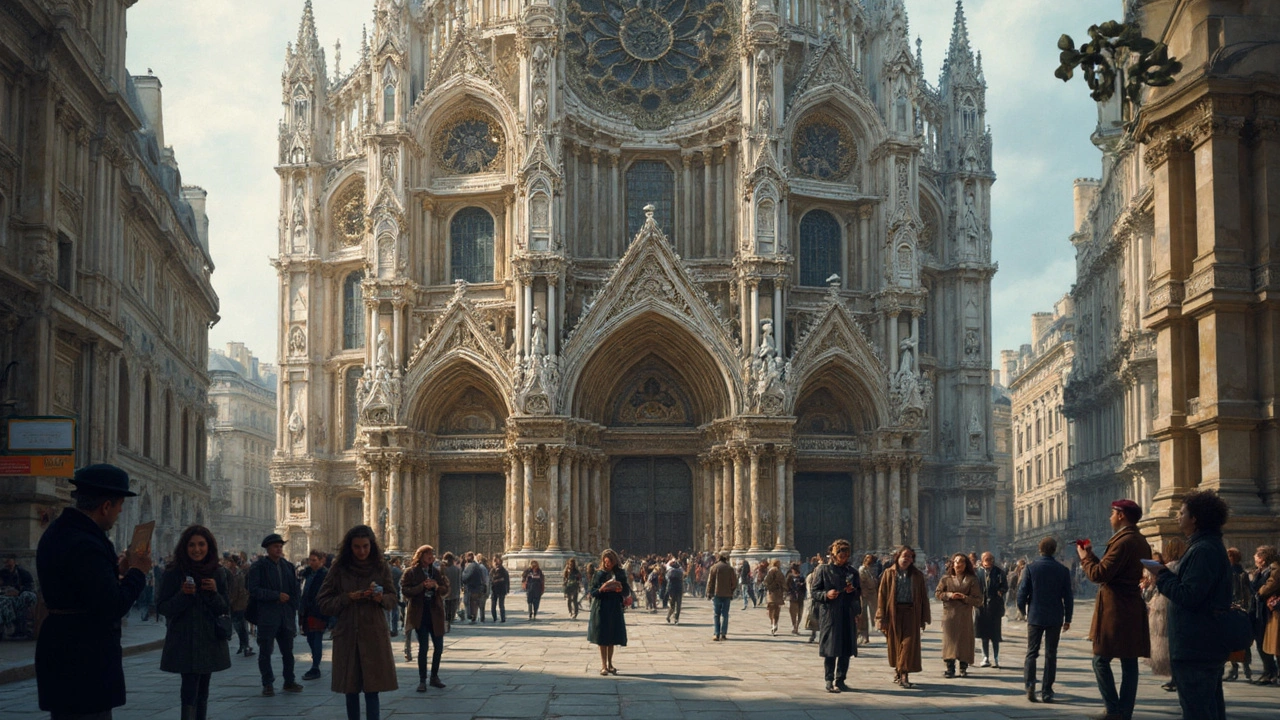Baroque buildings: how to spot their drama and use it today
Baroque buildings grab attention the moment you see them. Born in 17th-century Italy, Baroque pushed architecture toward movement, drama, and theatrical light. If you like bold interiors or grand public spaces, you’ll recognize its fingerprints fast: sweeping curves, deep shadow and bright gold, and compositions that feel almost alive.
Look for façades that move. Baroque architects avoided flat fronts. Columns push forward and sink back, walls bulge and recede, and staircases sweep like a stage set. Interiors often use oval or complex floor plans, huge ceiling frescoes that seem to spill into the room, and sculpted plasterwork that blurs art and structure.
Spot Baroque in churches, palaces, and theaters. Bernini’s colonnade at St. Peter’s opens like welcoming arms. The Church of the Gesù in Rome set the template for the Baroque church interior with a wide nave and explosion of painted ceiling scenes. In France, the Hall of Mirrors at Versailles is a Baroque showpiece: mirrors, gilding, and layered light create spectacle.
Materials and tricks matter. Stucco, gilt, marble veneer, and trompe-l’œil painting create depth without huge mass. Sculptures are often built into the architecture so figures and columns read as one composition. Light is not an afterthought — architects aimed windows and openings to spotlight altars, statues, or staircases at key moments of the day.
Baroque ideas keep showing up in modern design. You’ll see Baroque echoes in grand civic buildings, theater lobbies, and boutique hotels that want a dramatic first impression. Designers borrow Baroque’s love of contrast and layered light to make contemporary interiors feel richer without copying ornament directly.
Practical tips for using Baroque style
Want Baroque energy without turning your home into a palace? Start small. Add one large statement mirror, a curved sofa, strong contrast between dark and light finishes, or a dramatic chandelier. Use ornate moldings selectively — around a fireplace or ceiling medallion — and keep the rest of the room simple so the detail reads clearly.
Preserving Baroque buildings
Conserving Baroque details requires care. Gilding and painted ceilings need gentle cleaning and climate control to prevent flaking. When repairs are necessary, match stucco profiles and paint layers so new work blends in. If you own or manage a Baroque building, document finishes, work with a conservator, and avoid harsh cleaners that strip original surfaces.
If you want more examples or travel tips, check our Baroque Architecture article on Macklowe Art & Architecture. It shows where to see the best façades, interiors, and how Baroque still shapes modern design. Spotting those bold moves changes how you look at buildings on the street.
Quick checklist when you visit Baroque buildings: stand back to study the façade's rhythm; look up for ceiling frescoes and mask of light; note materials like stucco, marble, gilt; watch how staircases and balconies frame views; feel the contrast between shadowed niches and bright altars; take photos of details, not whole rooms, to compare later. This habit trains your eye very quickly indeed.

Baroque Architecture: The Unforgettable Charm That Changed Cities
Baroque architecture isn't just about fancy churches and palaces—it's a statement, bold and full of personality. This article breaks down why baroque buildings catch everyone’s eye, what details to watch for, and where you can see the best examples around the world. You'll learn why these structures feel so dramatic and alive, plus what to look for if you want to spot real baroque style. Whether you're planning a trip or just want to sound smart at a dinner party, we've got the facts and tips you need.
Read more